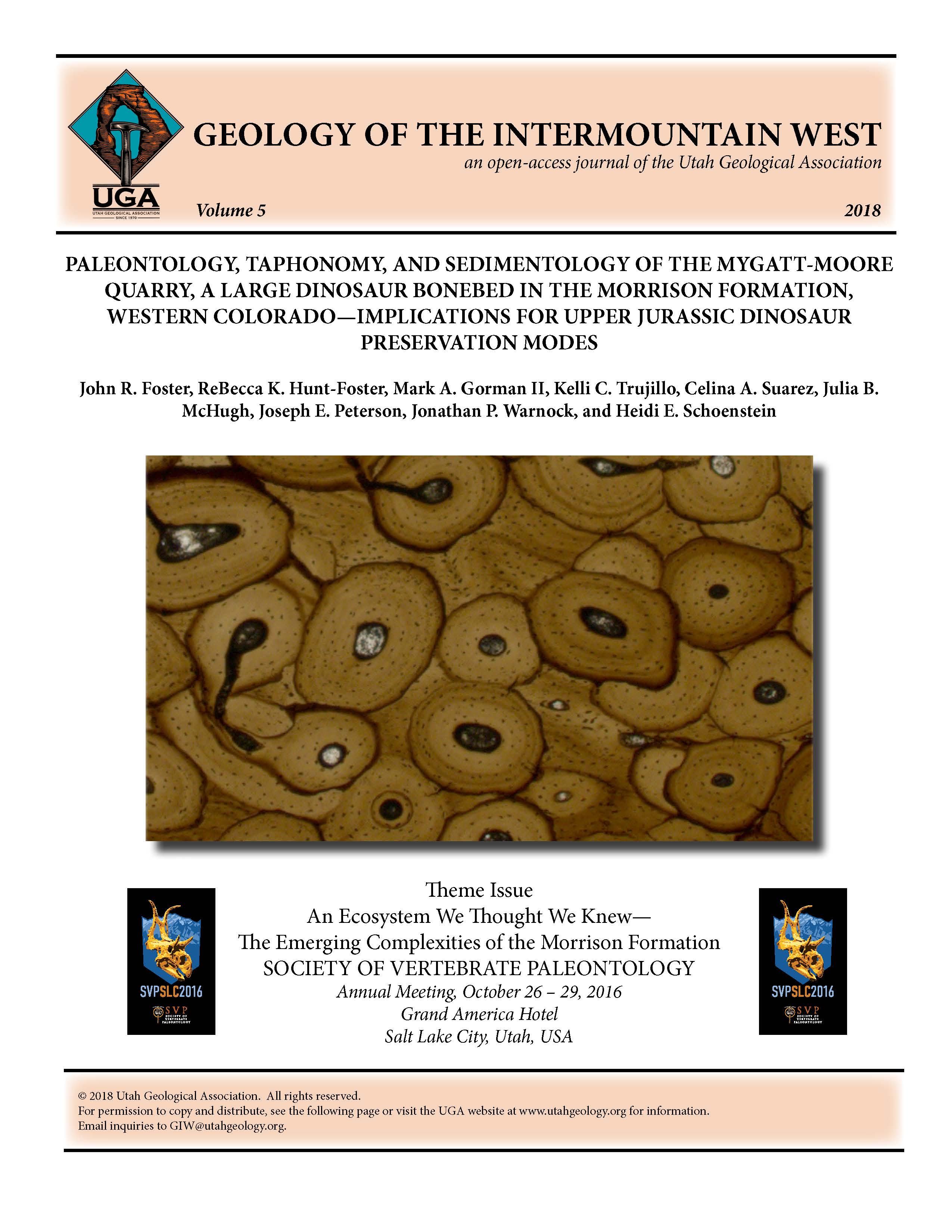Paleontology, taphonomy, and sedimentology of the Mygatt-Moore Quarry, a large dinosaur bonebed in the Morrison Formation, western Colorado—Implications for Upper Jurassic dinosaur preservation modes
Abstract
The Mygatt-Moore Quarry is a deposit of several thousand dinosaur bones in the Brushy Basin Member of the Morrison Formation in western Colorado. The site has been worked for more than 30 years and nearly 2400 mapped specimens have been collected. This study gathered data about the quarry from many sources to investigate the origin of the deposit. The Mygatt-Moore Quarry appears to be an attritional deposit of a relatively restricted diversity of dinosaurs, with few other non-dinosaurian taxa, that accumulated in a vernal pool deposit in an overbank setting. Bone modification was mostly by corrosion and breakage by trampling; scavenging was abundant. The paleofauna is dominated by Allosaurus and Apatosaurus (MNI and NIS), with the polacanthid ankylosaur Mymoorapelta less common. The matrix of the main quarry layer includes abundant carbonized fragments of plant material, and the mud during the time of deposition may have been often at least damp and occasionally acidic and dysoxic. The Cleveland-Lloyd Dinosaur Quarry is a close correlate of the Mygatt-Moore Quarry in terms of lithology and taphonomy, but demonstrates significant differences upon close inspection of matrix details and bone modification. Large quarries of fine-grained facies in the Morrison Formation possess a very different preservation mode as well as different taxon and relative abundance profiles from those in coarser sediments, which suggests that more may be learned in the future from taphofacies study of large quarries in mudstone beds.

Copyright (c) 2018 Utah Geological Association

This work is licensed under a Creative Commons Attribution 4.0 International License.




